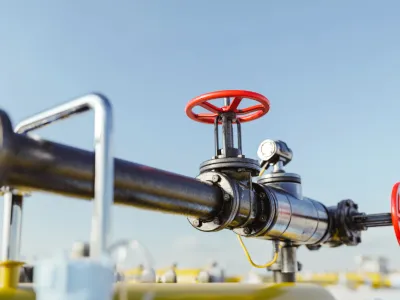CUB study: Utility company investment targets will up Minnesotans’ gas bills

Any Minnesotan opening their natural gas bill already knows this: the cost of gas delivered to our homes and businesses continues to rise year over year, and many ratepayers are feeling the pain. After many years of gas price declines, much of the noticeable increase in the last few years has been due to the increased price of natural gas on the global market. However, less obvious to consumers, Minnesota utilities have been steadily increasing delivery fees, as well. This concerning trend is the focus of a new study from the Citizens Utility Board of Minnesota (CUB).
CUB commissioned a study to understand the household impact of ever-increasing gas utility spending. We set out to examine publicly available data to quantify the ratepayer impact of continually increasing spending by Minnesota’s three largest gas utility companies.
The findings are stark.
Under utilities’ business-as-usual plans, Minnesota households will see their natural gas bills multiply.
A typical CenterPoint customer, for example, can expect to pay an extra $85 each month in delivery fees by 2040 – and that does not include any potential increases in the cost of the gas itself. Substantial bill increases are also expected from Xcel and Minnesota Energy Resources Corporation (MERC).
Utility companies make investments with the assurance that they will be paid back over time, with an added return on equity. Investor-owned companies are inherently beholden to investors and must prioritize generating this return. That’s why investor-owned utilities focus on capital investment growth, and it’s why Minnesota’s gas companies have publicly stated investment growth goals for the future.
Despite having some of the lowest safety risks of any natural gas distribution systems in the country, Minnesota gas utilities plan to spend more on capital investments each year than the year before.
To hit their corporate investment targets, CenterPoint, Xcel, and MERC will recover a combined $3 billion per year from ratepayers by 2040. To put this in perspective, it’s equivalent to the ratepayers of these three companies purchasing nearly three U.S. Bank Stadiums every year.
For Minnesota households, utilities’ investment targets translate into big bill increases.
CenterPoint Energy’s delivery charges, for example, have already doubled since 2010 for the typical household. That’s an annual growth rate of more than 5% per year, but bill growth could ramp up even faster in coming years. To meet company investment targets, the typical CenterPoint customer will see their monthly delivery charges more than triple between 2023 and 2040. That means a typical customer will pay 6.4 times more in delivery charges in 2040 than they did in 2010. Substantial bill increases are also expected from Xcel and MERC.
These projections assume that Minnesotans will continue to use the same natural gas volumes as they do today – but that’s unlikely to happen.
If Minnesota is to reach its statutory goal of net zero greenhouse gas emissions by 2050, natural gas usage will almost certainly need to be drastically reduced. We're already seeing technological advancements, rebates, and tax credits spur the adoption of appliances like air source heat pumps, which can take a large portion of the heating load off of the natural gas system.
Customers who can’t make upgrades to their homes could face astronomical bill increases.
When gas demand falls, utilities will have to increase base rates even faster to recoup their investments over fewer units of gas sold, driving up rates for customers that remain on the system. The end result? Those who cannot manage or afford to transition their homes away from gas – the same households who are least likely to be able to afford ever-increasing costs – could be stuck with astronomical bills.
Utility investments are long-term commitments, typically paid down over more than 30 years (and as long as 60 years). Decisions made today commit ratepayers to higher bills for decades to come.
This report should raise questions for Minnesotans, utility regulators and the utility companies
themselves. Especially given the uncertainty about the future of gas usage, we must all think carefully about these investments to ensure that we are not saddling future generations with billions of dollars in natural gas infrastructure debt.